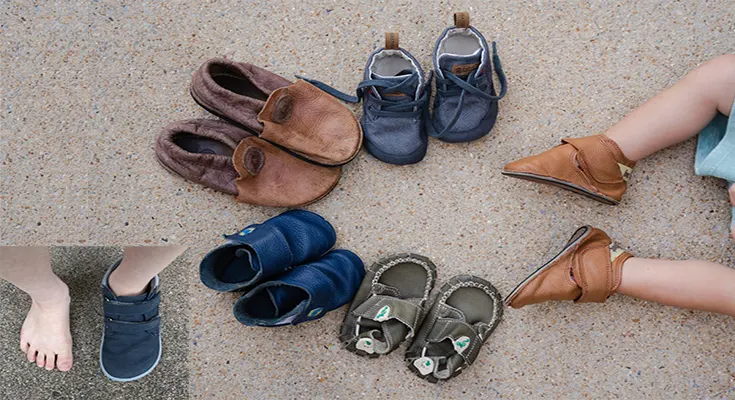As parents, ensuring the proper development of our children is a top priority. One critical aspect often overlooked is the choice of footwear, particularly for toddlers. Traditional shoes can sometimes hinder natural foot development, leading many parents to consider barefoot shoes for their little ones. This guide delves into the benefits of toddler barefoot shoes and why they might be the best choice for your child’s growing feet.
Understanding Barefoot Shoes
Barefoot shoes, as the name suggests, aim to mimic the natural feel of walking barefoot while providing protection from the elements. They are designed with minimalistic features to allow the foot to move as freely and naturally as possible. For toddlers, whose feet are still developing, this can be particularly beneficial.
Benefits of Toddler Barefoot Shoes
Natural Foot Development: Barefoot shoes allow toddlers’ feet to move and flex naturally, promoting the development of strong muscles and ligaments. This is crucial during the early stages of growth.
Improved Balance and Coordination: With barefoot shoes, toddlers can feel the ground beneath their feet, which enhances proprioception – the sense of self-movement and body position. This can improve their balance and coordination.
Better Posture: By encouraging a natural walking pattern, barefoot shoes can help toddlers maintain better posture, reducing the risk of future musculoskeletal issues.
Enhanced Sensory Feedback: Barefoot shoes provide greater sensory input from the ground, aiding in the development of the nervous system and improving sensory processing abilities.
Key Features to Look For
When selecting barefoot shoes for toddlers, consider the following features to ensure they provide the necessary benefits:
Flexible Soles: The soles should be thin and flexible, allowing the foot to bend and move naturally.
Wide Toe Box: A spacious toe box is essential to let the toes splay naturally, promoting better balance and foot strength.
Lightweight Design: Lightweight shoes ensure that toddlers can move freely without being encumbered by heavy footwear.
Breathable Materials: Look for shoes made from breathable materials to keep little feet cool and dry.
Minimal Arch Support: Barefoot shoes should have minimal to no arch support to allow the foot to strengthen naturally.
Top Picks for Toddler Barefoot Shoes
Vivobarefoot Kids Primus
Features: Ultra-thin, puncture-resistant sole; wide toe box; made from eco-friendly materials.
Benefits: Encourages natural foot movement and environmental consciousness.
Bobux Xplorer
Features: Flexible sole; breathable mesh upper; easy to put on and take off.
Benefits: Ideal for active toddlers learning to walk and explore their environment.
Plae Ty Sneaker
Features: Customizable fit with interchangeable tabs; flexible sole; breathable materials.
Benefits: Supports natural foot movement while providing a customizable fit.
Merrell Bare Steps Boot
Features: Extra wide toe box; flexible sole; made with durable materials for outdoor adventures.
Benefits: Perfect for toddlers who love to explore the outdoors.
Ten Little Everyday Original
Features: Lightweight design; zero-drop sole; wide toe box.
Benefits: Promotes natural walking and foot development in everyday settings.
Tips for Transitioning to Barefoot Shoes
Gradual Introduction: Start by allowing your toddler to wear barefoot shoes for short periods, gradually increasing the duration as their feet adapt.
Monitor Their Comfort: Keep an eye on how your toddler reacts to the new shoes. Ensure there are no signs of discomfort or irritation.
Encourage Barefoot Time at Home: Allow your toddler to go barefoot at home to further support natural foot development.
Consult with a Pediatric Podiatrist: If you have concerns about your child’s foot development, consult a pediatric podiatrist for personalized advice.
Toddler barefoot shoes offer a range of benefits that support the natural development of your child’s feet. By choosing footwear that promotes flexibility, strength, and natural movement, you can help ensure their feet grow healthily and set the foundation for a lifetime of good foot health. As with any aspect of child development, it’s important to choose products thoughtfully and consult professionals when needed to provide the best support for your growing toddler.


